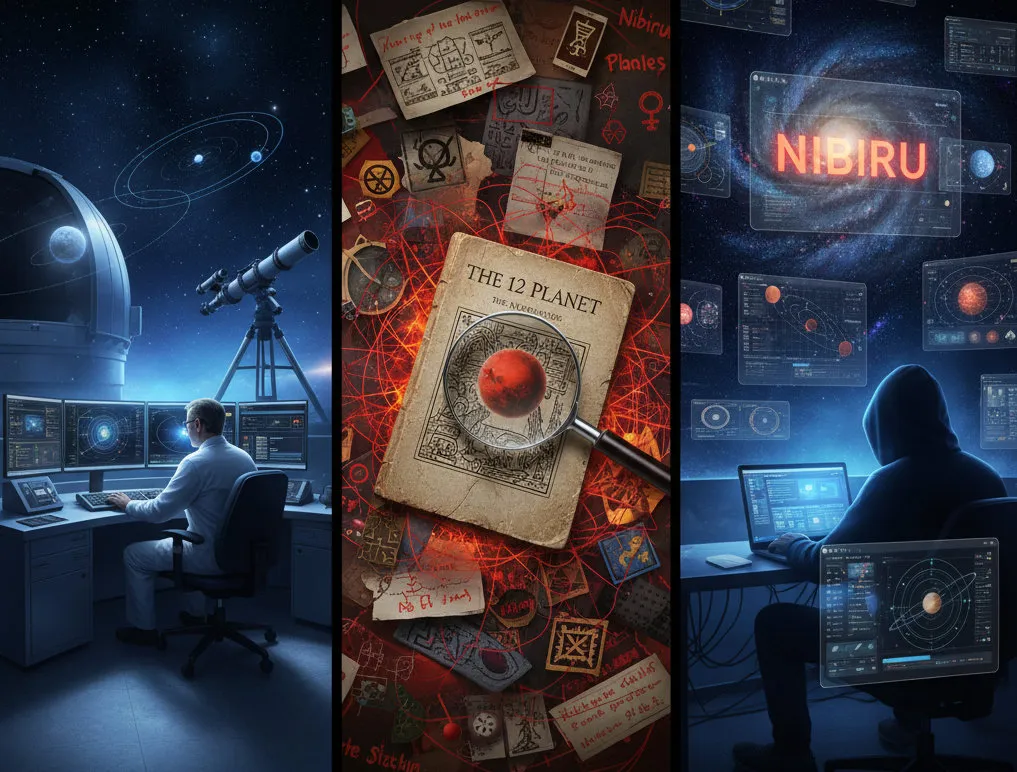
The modern catastrophe myth of Nibiru as a hidden planet on a collision course with Earth originates largely from Zecharia Sitchin's 1976 book "The 12th Planet" and later internet-era doomsday movements.
Sitchin claimed that Nibiru was a massive planet with a 3,600-year elliptical orbit that periodically enters the inner solar system. According to his interpretation, it was the home of the Anunnaki, and its previous passages triggered catastrophic events on Earth, from the Great Flood to the fall of ancient civilisations.
His narrative was compelling. It combined ancient texts, astronomy and catastrophism into a grand unified theory. It suggested that humanity's earliest stories of gods and disasters were actually records of planetary encounters.
Professional Assyriologists and astronomers have repeatedly dismantled these claims. They point to mistranslations, selective readings of texts and a fundamental misunderstanding of both Akkadian language and orbital mechanics.
The word "Nibiru" does not mean "planet of the crossing" in the sense Sitchin suggested. It refers to a crossing point, not a crossing planet. Ancient texts do not describe a world swinging into view every few millennia.
Moreover, the physics do not work. A planet-sized body entering the inner solar system every 3,600 years would leave unmistakable gravitational signatures. It would destabilise planetary orbits, disrupt the asteroid belt and create observable perturbations that simply do not exist.
Yet the myth persists. In 2003, online communities predicted Nibiru would arrive and cause pole shifts, tsunamis and mass extinction. The date passed. New dates were proposed. The cycle continues.
There is something psychologically potent about the Nibiru story. It externalises catastrophe, making it cosmic rather than human-caused. It provides a timeline, a sense of impending resolution to global anxieties. It offers esoteric knowledge, the feeling of being among the informed few.
What makes the Nibiru myth particularly resilient is that it hybridises legitimate science with pseudoscience. There is genuine scientific discussion about the possibility of a distant, undiscovered planet in the outer solar system. This hypothetical body, often called "Planet Nine," has nothing to do with Nibiru, but the names get conflated.
Planet Nine, if it exists, would orbit far beyond Neptune, taking tens of thousands of years to complete a single orbit. It would never come near Earth. Its existence is inferred from gravitational effects on Kuiper Belt objects, not ancient tablets.
The Nibiru myth also feeds on gaps in public scientific literacy. Orbital mechanics, gravitational dynamics and astronomical observation are not intuitive. It is easier to accept a simple narrative about a hidden planet than to engage with the complexities of celestial mechanics.
In this sense, Nibiru functions as a modern myth in the anthropological sense: a story that organises uncertainty, explains the inexplicable and provides meaning in a chaotic world. It just happens to be a myth dressed in the language of science.